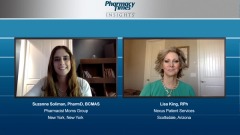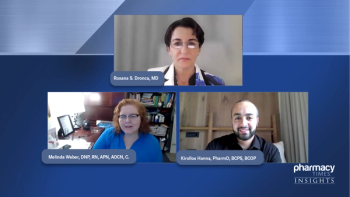
Need For Improved Prescription Drug Access
Suzanne Soliman, PharmD, BCMAS, shares startling data and explains how the need to optimize patient care led to the development of Prescription Discount Programs.
Episodes in this series

Suzanne Soliman, PharmD, BCMAS:In terms of the development of PDPs [prescription discount programs], from some of the data I have seen—related to optimizing patient care—about 70% of Americans are currently taking 1 prescription medication right now. When I saw that number, I was in disbelief. Most patients who are taking medications are taking them for a chronic disease. Often, they might have to skip a month or skip 2 months because they cannot afford the medication. I have worked in a retail pharmacy setting, and I personally know a patient and his spouse who were splitting their blood pressure pills every month because of the cost. A lot of what I saw was like that, and it is about optimizing patient care, ensuring patients take the medication they need to take and that it is affordable as well. I don’t know if you’ve encountered things like that.
Lisa King, RPh: Yes, I think of many instances where patients will choose which medication they want to pick up. A patient who is diabetic and then asthmatic may not be able to afford their inhalers, their insulin and other medications they are on, so they choose which medications they are going to purchase for the month. It is sad to see people having to choose which disease state that they are going to be treating. It is so helpful to have these prescription discount programs available to patients.
Suzanne Soliman, PharmD, BCMAS:There was a study done by the Kaiser Family Foundation, and this was published in 2019; the study showed that about a third of adults report not taking their medicine as prescribed at some point in the past year because of cost. Cost was a rate-limiting factor; again, it is amazing how some medication is recommended for a patient, but because of cost, they are not able to obtain the medication that was recommended by their physician or their prescriber.
Lisa King, RPh: Yes, and I know through that study, too, that about 80% of the patients said their disease state became worse because they were not able to take their medication. It is disheartening, especially as pharmacists, where you want to see your patients getting better instead of not being able to take their medications and not having the outcome that they want.
Suzanne Soliman, PharmD, BCMAS: Definitely. Having access to your medication changes everything. I think a lot of that data showed that it was often a situation patients who had an annual income of $40000 or less found themselves in, but I think it is also amongst others as well. Everyone is impacted by prescription drug costs. Being able to do something about it is good, which is why the PDPs were developed—to help provide more access for patients.
Lisa King, RPh: I even had a lot of patients who were using the prescription discount programs and then went to a new job and they were able to obtain prescription insurance through their health provider, but then realized that their co-pays were more. It is just such a wonderful way for patients to still be able to take medication, whether they have insurance or not.
Suzanne Soliman, PharmD, BCMAS:I always encourage patients to make sure that they know what the cash price is, what the insurance price is, and what their prescription discount program price would be, because they don’t always realize that sometimes insurance offers the highest cost.
Lisa King, RPh: Yes, exactly.
Transcript edited for clarity.
Newsletter
Stay informed on drug updates, treatment guidelines, and pharmacy practice trends—subscribe to Pharmacy Times for weekly clinical insights.











































































































































































































